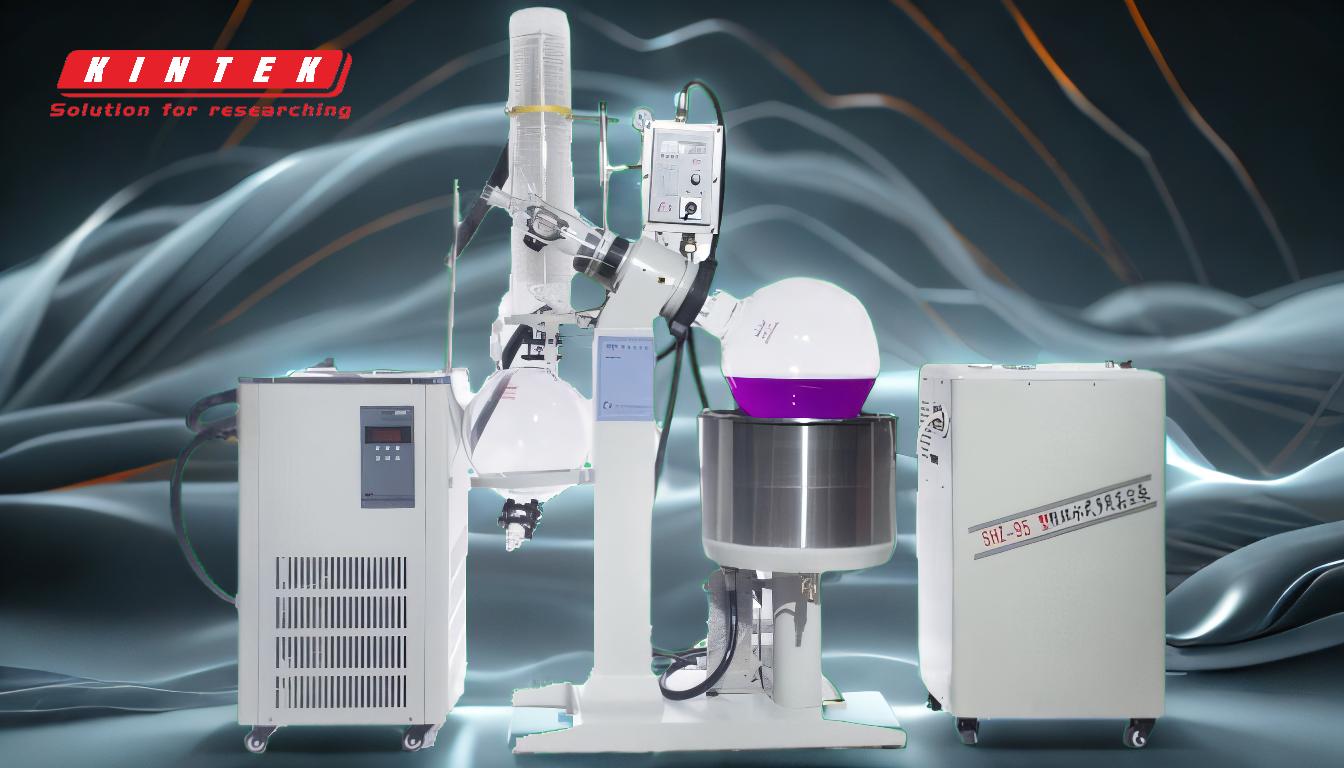Removing DMSO (dimethyl sulfoxide) from a rotary evaporator (rotovap) involves using a combination of vacuum, heat, and solvent exchange to effectively separate DMSO from the desired compound. The process leverages the rotovap's ability to lower the boiling point of DMSO under reduced pressure, allowing it to evaporate at a lower temperature. After evaporation, the material is often redissolved in a low-boiling-point solvent like dichloromethane (DCM) and precipitated in a non-solvent such as hexane or diethyl ether. This method is efficient, fast, and avoids the addition of unnecessary chemicals, but care must be taken to avoid heat damage to sensitive compounds.
Key Points Explained:

-
Principle of Rotary Evaporation:
- A rotary evaporator works by reducing the pressure inside the system, which lowers the boiling point of the solvent (in this case, DMSO). This allows DMSO to evaporate at a lower temperature, minimizing the risk of thermal degradation of the compound.
- The sample is placed in a round-bottomed flask, which is rotated in a heated water bath. The rotation increases the surface area of the liquid, speeding up evaporation.
- The solvent vapor is condensed by a water-cooled condenser and collected in a separate flask, leaving the concentrated compound in the original flask.
-
Conditions for DMSO Removal:
- Vacuum: A deep vacuum is applied to significantly lower the boiling point of DMSO, enabling its removal at a lower temperature (around 50 °C).
- Heat: The water bath is set to approximately 50 °C to facilitate evaporation without causing excessive thermal stress to the compound.
- Rotation: Continuous rotation ensures that the liquid forms a thin film on the inner surface of the flask, maximizing evaporation efficiency.
-
Post-Rotovap Processing:
- After DMSO removal, the material is often redissolved in a low-boiling-point solvent like dichloromethane (DCM). This step helps to further purify the compound and remove any residual DMSO.
- The solution is then precipitated in a non-solvent such as hexane or diethyl ether. This process isolates the compound as a solid, which can be filtered and dried.
-
Advantages of Using a Rotovap for DMSO Removal:
- Efficiency: The rotovap method is fast and effective, making it suitable for large-scale or routine applications.
- Simplicity: No additional solvents or chemicals are required, reducing the risk of contamination.
- Minimal Thermal Degradation: By operating under a vacuum, the boiling point of DMSO is lowered, reducing the need for high temperatures that could damage sensitive compounds.
-
Potential Drawbacks:
- Heat Sensitivity: While the rotovap method minimizes thermal stress, some delicate compounds (e.g., peptides or proteins) may still be at risk of damage. Careful control of temperature and vacuum is essential.
- Residual DMSO: Even after rotovap evaporation, trace amounts of DMSO may remain. The solvent exchange and precipitation steps help mitigate this issue.
-
Practical Considerations:
- Equipment Setup: Ensure the rotary evaporator is properly assembled, with a well-functioning vacuum pump and water condenser. The round-bottomed flask should be securely attached to avoid leaks.
- Safety Precautions: DMSO is a powerful solvent that can penetrate skin, so handle it with care. Use appropriate personal protective equipment (PPE) such as gloves and lab coats.
- Optimization: Depending on the specific compound and scale of the operation, parameters such as vacuum strength, water bath temperature, and rotation speed may need to be adjusted for optimal results.
By following these steps and considerations, DMSO can be effectively removed from a rotary evaporator, leaving behind a purified compound ready for further processing or analysis.
Summary Table:
| Key Aspect | Details |
|---|---|
| Principle | Lower boiling point under vacuum allows DMSO evaporation at lower temps. |
| Conditions | Deep vacuum, ~50 °C heat, continuous rotation for efficient evaporation. |
| Post-Processing | Redissolve in DCM, precipitate in non-solvent (e.g., hexane or diethyl ether). |
| Advantages | Fast, efficient, minimal contamination, and reduced thermal degradation. |
| Drawbacks | Risk of heat damage to sensitive compounds; trace DMSO may remain. |
| Practical Tips | Proper equipment setup, safety precautions, and parameter optimization. |
Need help optimizing your rotary evaporation process? Contact our experts today for tailored solutions!









